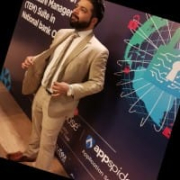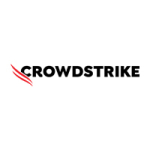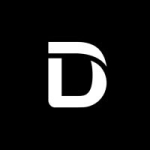What is our primary use case?
We use this solution for deploying and integrating log sources and use cases.
We use it to generate offensives based on normal behavior and suspicious behavior from our security tools, firewalls, and other solutions.
We have applied a set of old and new rules to QRAdar that aim to detect persistent abnormalities in our environments.
Within our organization, our security operations center and users from our local security team — roughly 10 to 12 users — use QRadar. We plan to expand to other areas of the company so that other people can use QRadar for different use cases. But right now only the security teams use it.
How has it helped my organization?
It's more of what it has provided for our company. We have much better visibility into our environment now. It has become much easier to create an alert for suspicious behavior, to operate on security incidents when they happen, and to drill down on specific events and figure out exactly which machines and users were involved.
What is most valuable?
I think the log search is pretty good. It's very easy to create complex searches and aggregate results and create graphics, etc.
The rule engine is very easy to use — very flexible. We can create rules based on whatever behavior we want. It's very easy to use compared to Splunk.
When we analyzed Splunk, that was the criteria that we looked at. Splunk was a lot more difficult to use and to create rules.
The standard rules they have are very comprehensive. There are many content packs in the apps that enrich those rules. We are still using the native rules from QRadar because there are many useful rules there. I think we're going to have a very good experience with them.
What needs improvement?
One thing one has to be aware is that qRadar doesn't have a standard UI style, but older (clunkier) and newer (more modern and easy to use) screens. The QRadar UI involves a lot of clicks and pop-ups to get where you want, which is certainly not the best UX, but isn't totally a pain also. Although it's a bit difficult to navigate through screens at first, the UX is pretty good once you learn the "qRadar way", which takes about a few weeks to master.
Buyer's Guide
IBM Security QRadar
October 2025
Learn what your peers think about IBM Security QRadar. Get advice and tips from experienced pros sharing their opinions. Updated: October 2025.
872,655 professionals have used our research since 2012.
For how long have I used the solution?
I have been using this solution for the last three months.
What do I think about the stability of the solution?
We had some bugs and we had to handle them. They impacted our deployment timeline, but all of the bugs that we had were quickly solved by engineers from IBM. Currently, we are not fully satisfied with the stability, but the support from IBM is very good and they can solve our problems very, very quickly.
What do I think about the scalability of the solution?
There seems to be a cap-limit regarding scalability. IBM limits the amount of data you can send into the collectors so scalability-wise, it's not that optimum because sometimes we have a resource or a machine that tends to think it gets more events per second than it actually gets. Because of how the solution is made, If we send a large number of events to these event collectors, then they will start dropping events because we can't queue them. That seems to be by design — we aren't entirely satisfied with that. In this way, IBM kind of forces their customers to buy a larger license.
How are customer service and support?
IBM's customer support is very good.
We don't have any comments about community support because we don't know any communities that we can use to look up information about QRadar; however, in general, we have used IBM's documentation extensively — I think it's very useful, it's very complete, but sometimes it's a bit outdated.
Which solution did I use previously and why did I switch?
We used to use ArcSight. I can't even begin to compare these two products because ArcSight was a solution managed entirely by our security operations center team. We didn't have full knowledge of what the solution was capable of. Now we're seeing a much larger universe with QRadar — I think it's a completely different thing. QRadar is much more capable than ArcSight.
How was the initial setup?
Deployment-wise it's pretty easy already; it took us one hour to get QRadar running, and then a couple of days later, we had full deployment. We then began onboarding log sources — the process of onboarding log sources has been almost painless for 90% of our log sources, which are from different vendors and different tools, and within a month we had about 70% of all of our relevant security logs in qRadar, generating many interesting offenses on a daily basis. So that has been very positive.
We had little interaction with qRadar during the process of onboarding log sources — most log sources were automatically discovered, their events were mapped correctly and parsed to extract relevant fields. A few log sources required manual intervention or installation of content packs, and some of IBM's DSMs were a bit outdated, but these issues were rather quick to fix within qRadar itself.
What about the implementation team?
We used a partner company here called IT.eam, which helped us with the deployment. They are very capable and professional and it's been overall a great experience.
What's my experience with pricing, setup cost, and licensing?
It's very expensive but it fits our budget. Because it's very expensive, we had to come up with ways of filtering our logs before they get into QRadar because otherwise, we'd have to buy a much greater amount of events per second, and that would be very expensive.
Splunk is virtually the same price.
What other advice do I have?
I'd recommend QRadar for security teams that are more from the IT world and not so much from the development or data-science world. I think other tools, such as Splunk, are really great too, but QRadar is natively concerned with providing security rules and use cases. If you're looking for a reliable solution for security purposes only, QRadar is probably the way to go.
Overall, on a scale from one to ten, I would give this solution a rating of eight.
Which deployment model are you using for this solution?
On-premises
Disclosure: My company does not have a business relationship with this vendor other than being a customer.






















